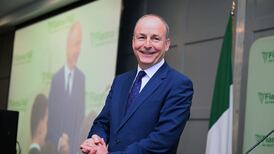IFG shareholders will be sitting up and taking notice on Thursday. The streamlined, pared-back financial services group is due to issue its full-year results and there could be good news on the dividends front.
IFG has undergone a metamorphosis in recent years, divesting its non-core operations.
Not only does this mean it is now pretty much a pure play on the UK financial services sector through its two key units, James Hay Partnership and Saunderson House, but it also means it has a very healthy balance sheet.
In an interim management statement (IMS) last November, IFG indicated that its board would review the group’s dividend policy in light of the significant changes to the business and the improved liquidity of its balance sheet.
Goodbody research analyst Colm Foley said IFG may look to lower their dividend coverage ratio. Essentially, that would mean higher dividends. "They have significant cash reserves to increase dividends or pursue acquisitions," he said.
In the IMS, the group said its primary focus would be on organic growth but it would continue to “monitor the competitive landscape for acquisition opportunities” to further accelerate growth. The sector in which IFG operates has been quite active in terms of mergers and acquisitions recently, so the market will be on the alert for hints of any impending deals on the horizon.
IFG may also give an update on growth in the UK, as well as any ongoing client wins at the wealth management services provider Saunderson House.
Also noteworthy will be any update as to whether the group has managed to get through changes to the pricing structure at James Hay, which provides a full platform for retirement wealth planning, specialising in self-directed pension schemes. “Any evidence of that would be helpful,” Foley said.
The Financial Times recently reported that James Hay had significantly increased fees charges on a range of non-standard investment options in response to new capital adequacy rules coming down the line in the UK, so traders will be watching out for any further soundings in this area.
In its November IMS, IFG forecast that pre-tax profits would be marginally below 2013 levels, attributing this to pressure on margins and interest income at James Hay. Confirmation of profit levels will therefore be awaited with interest, as will any forecasts for the year ahead.










